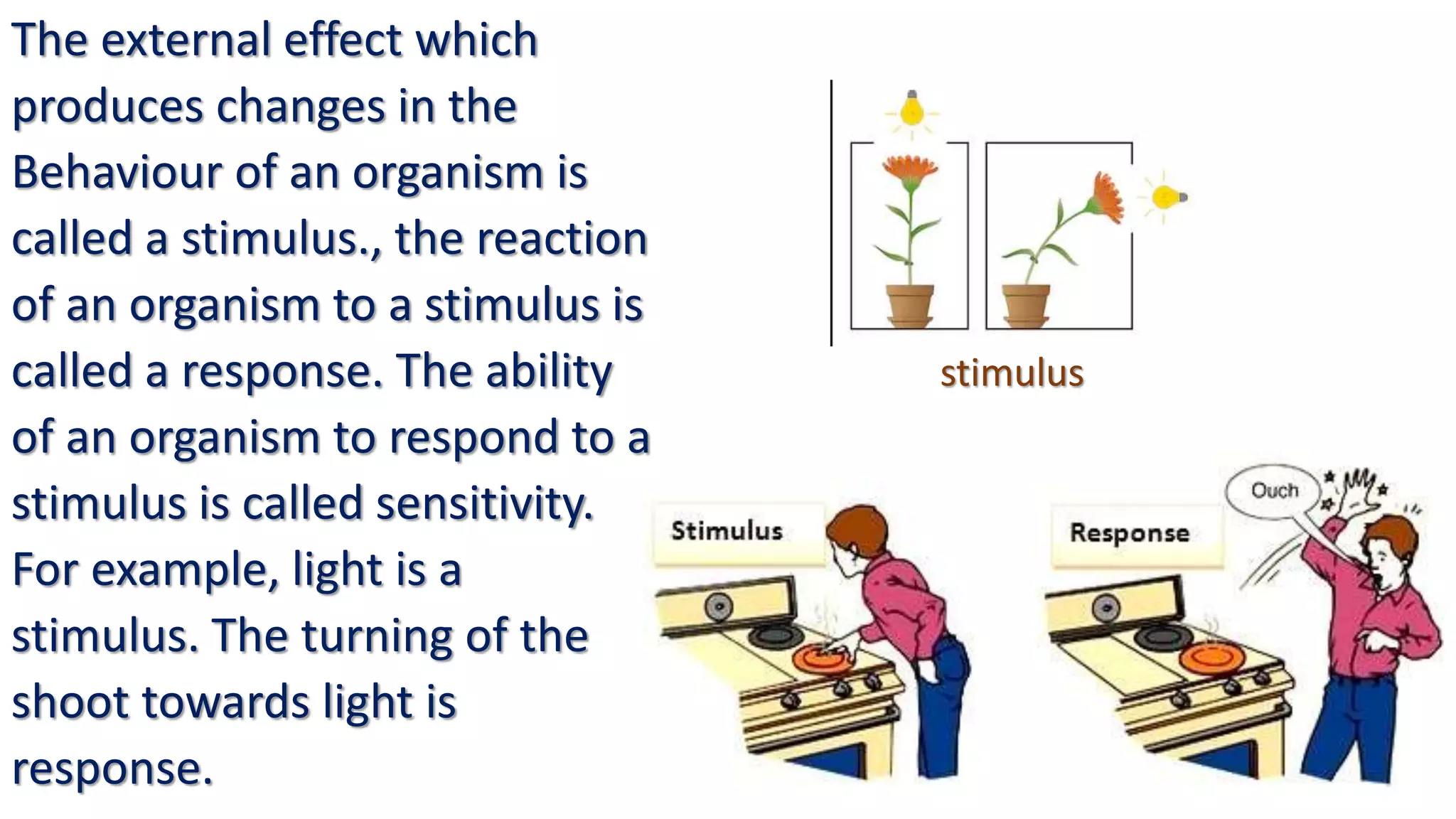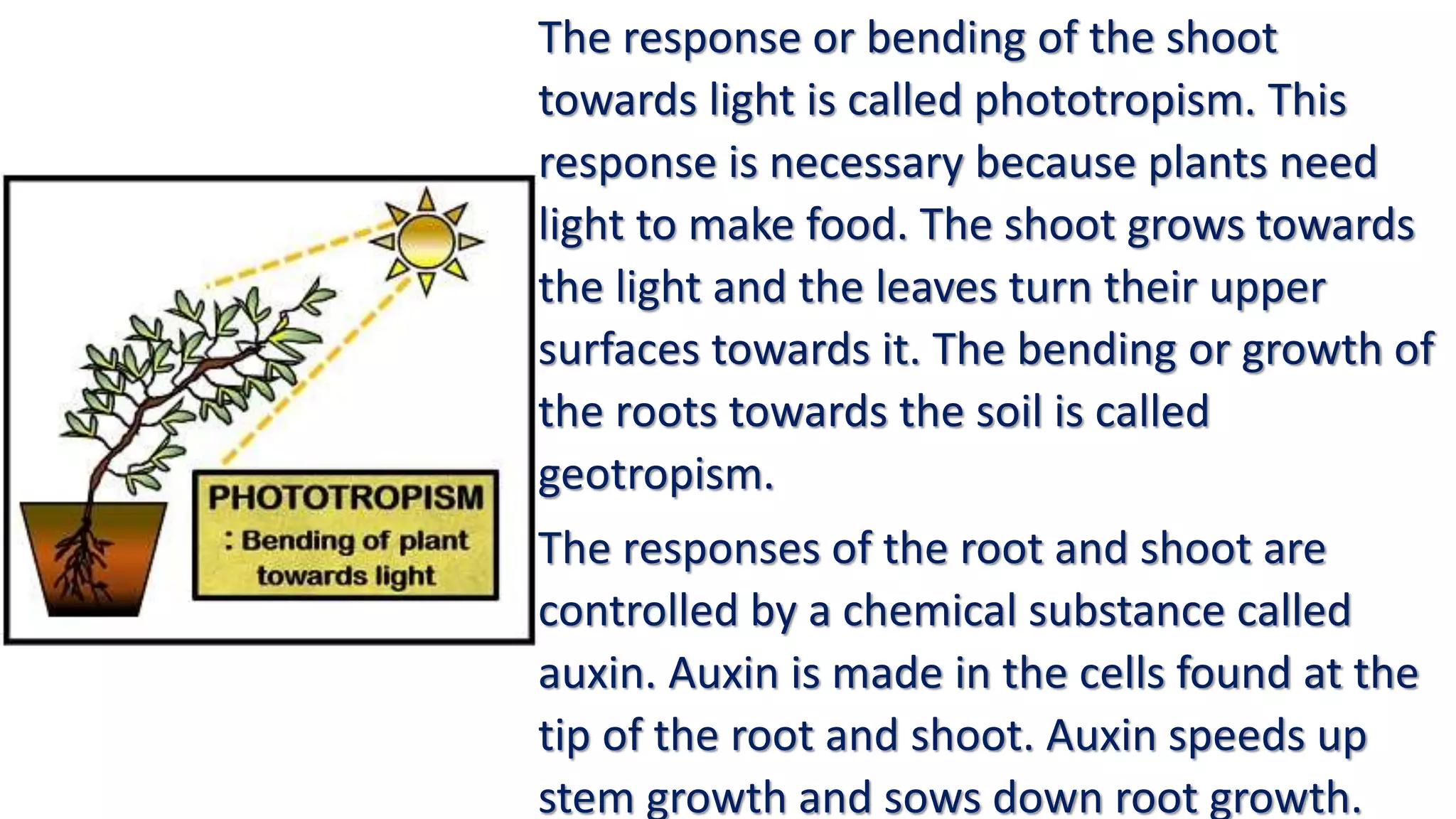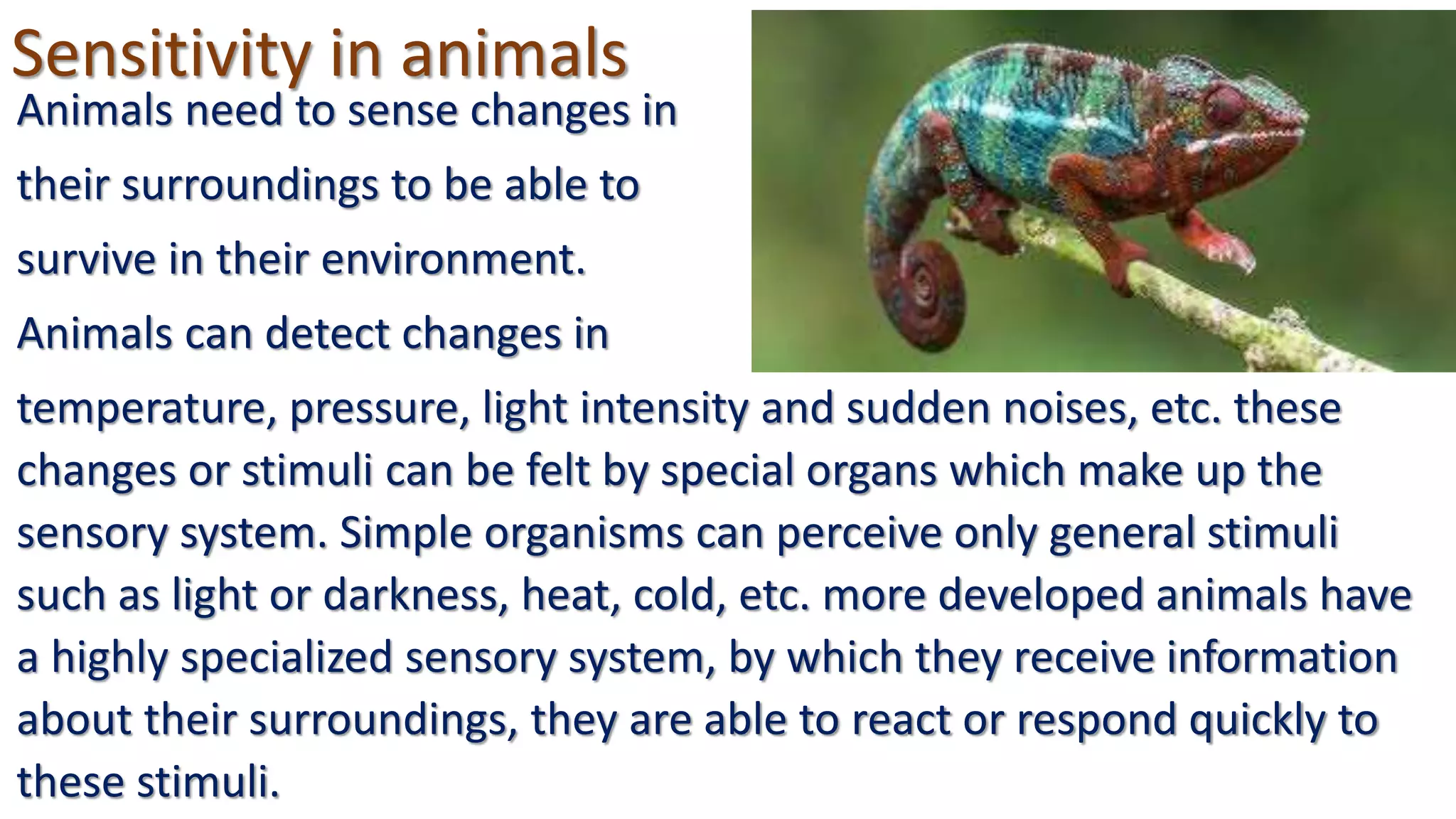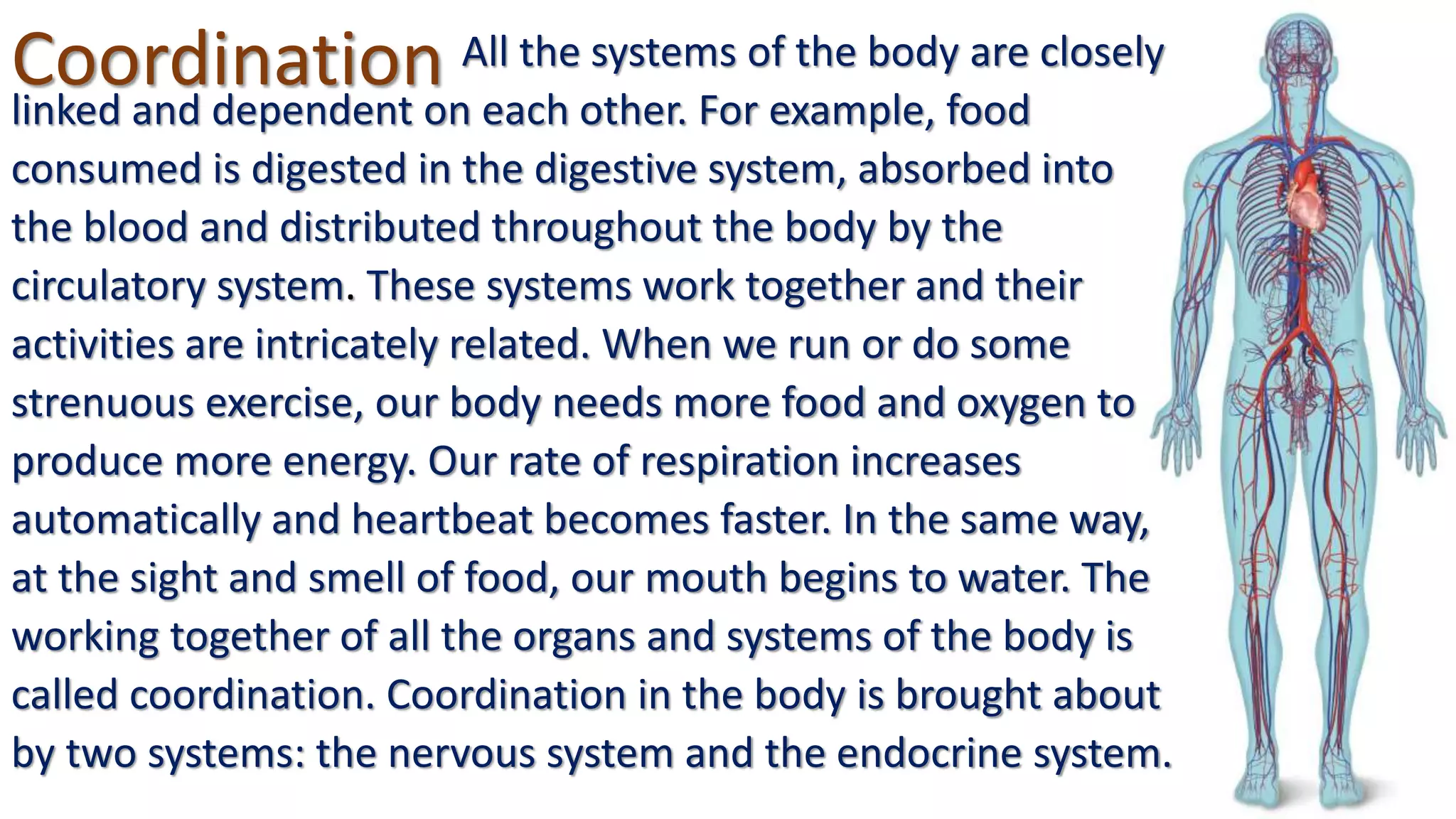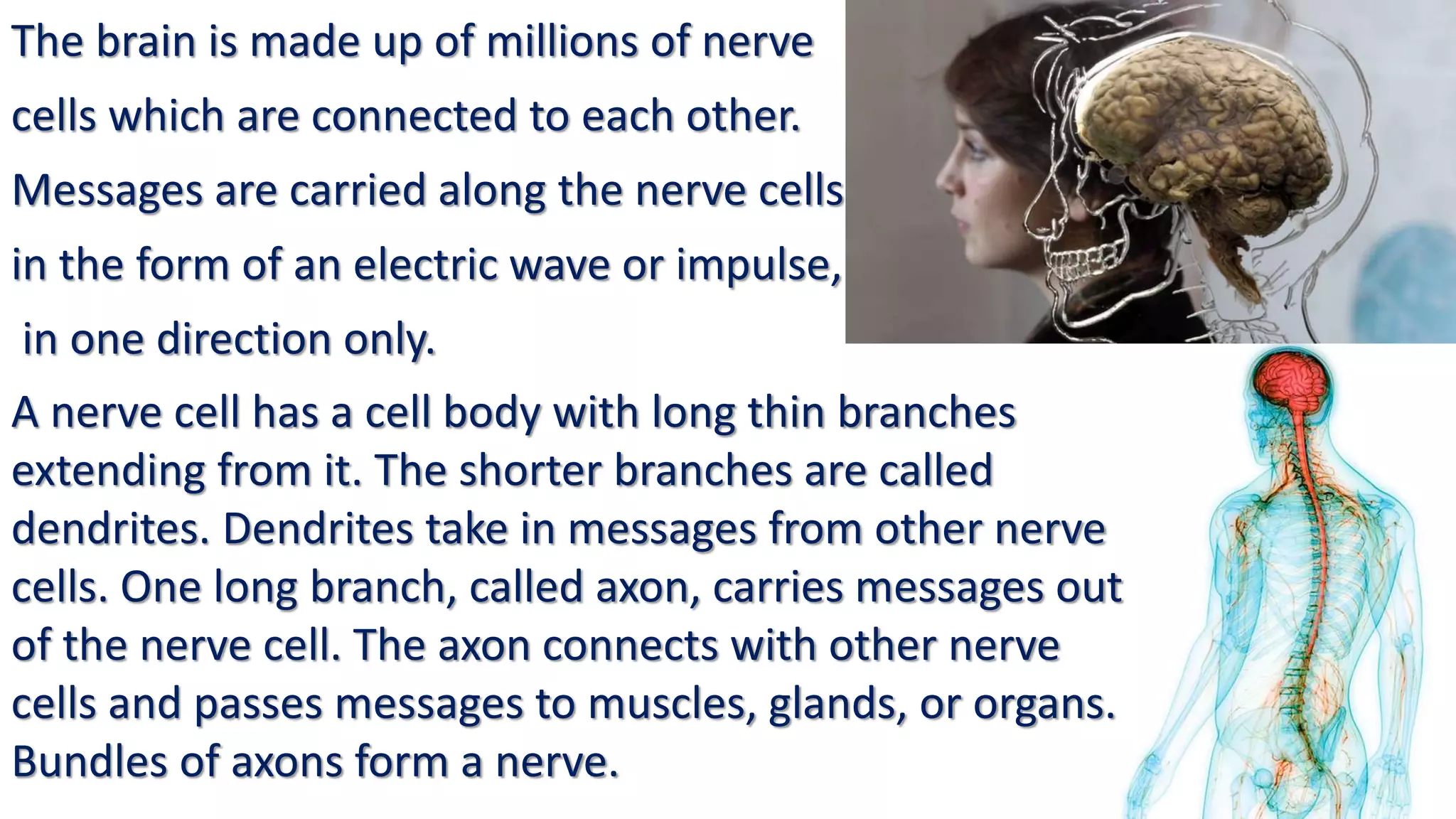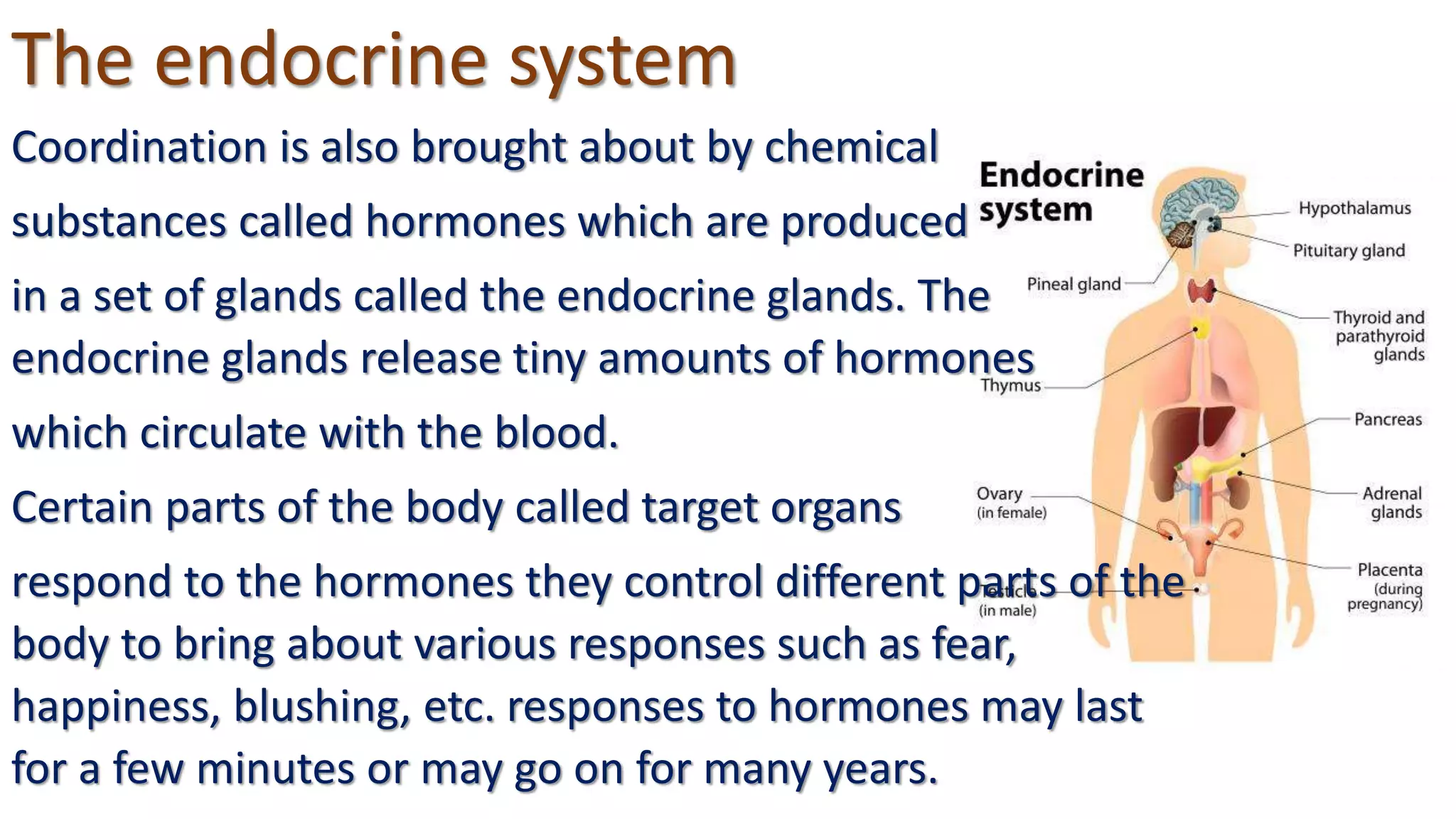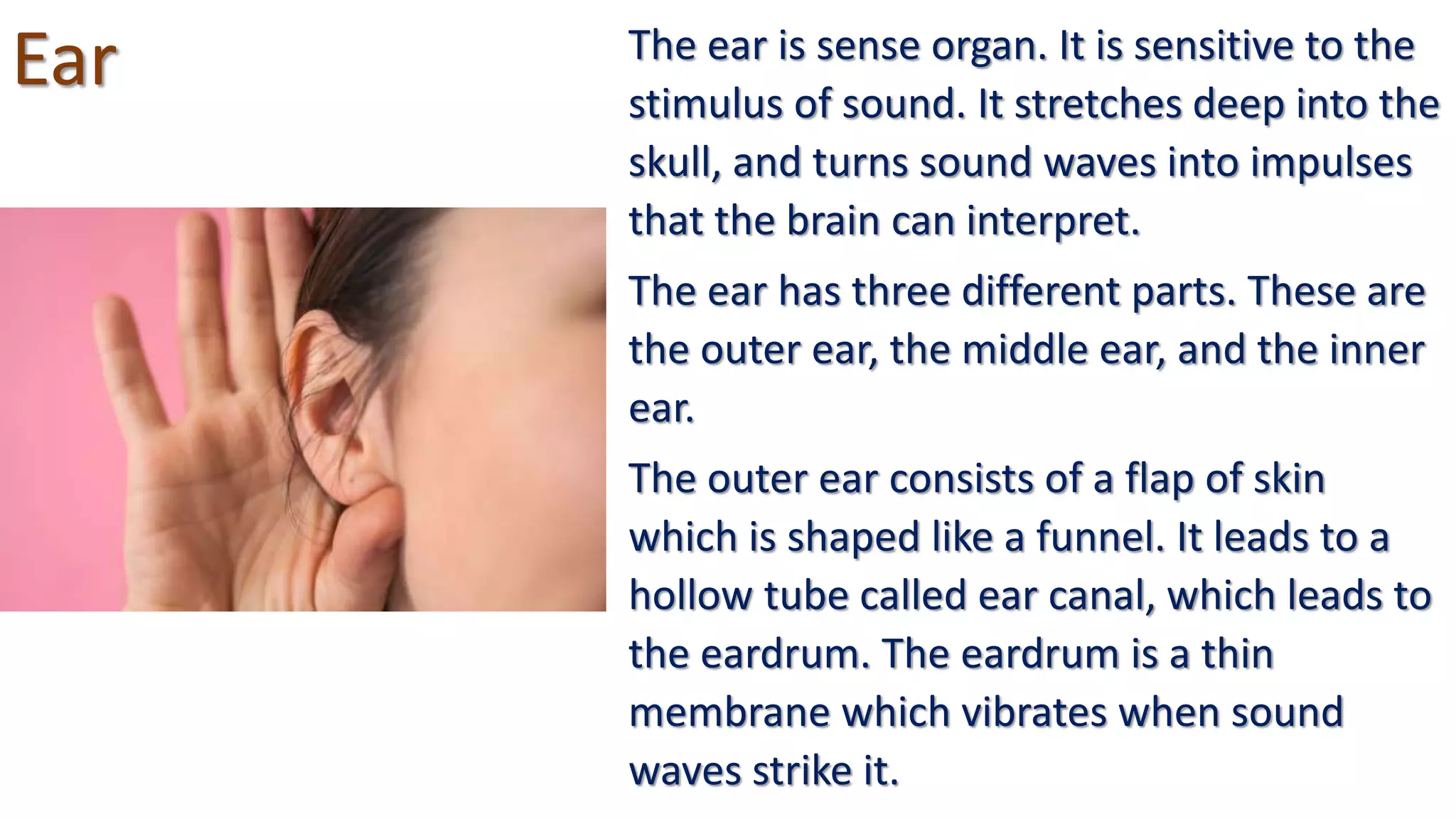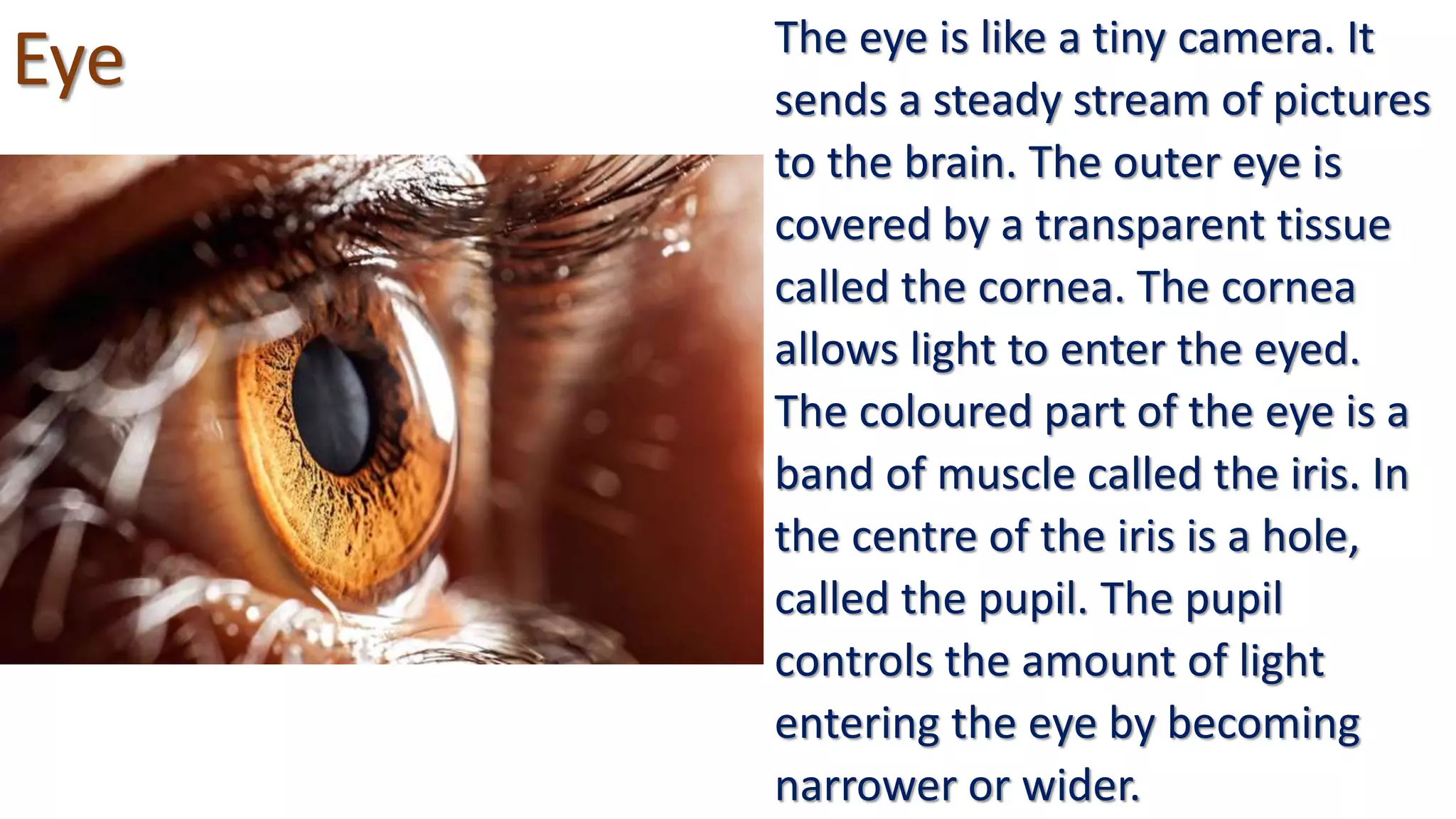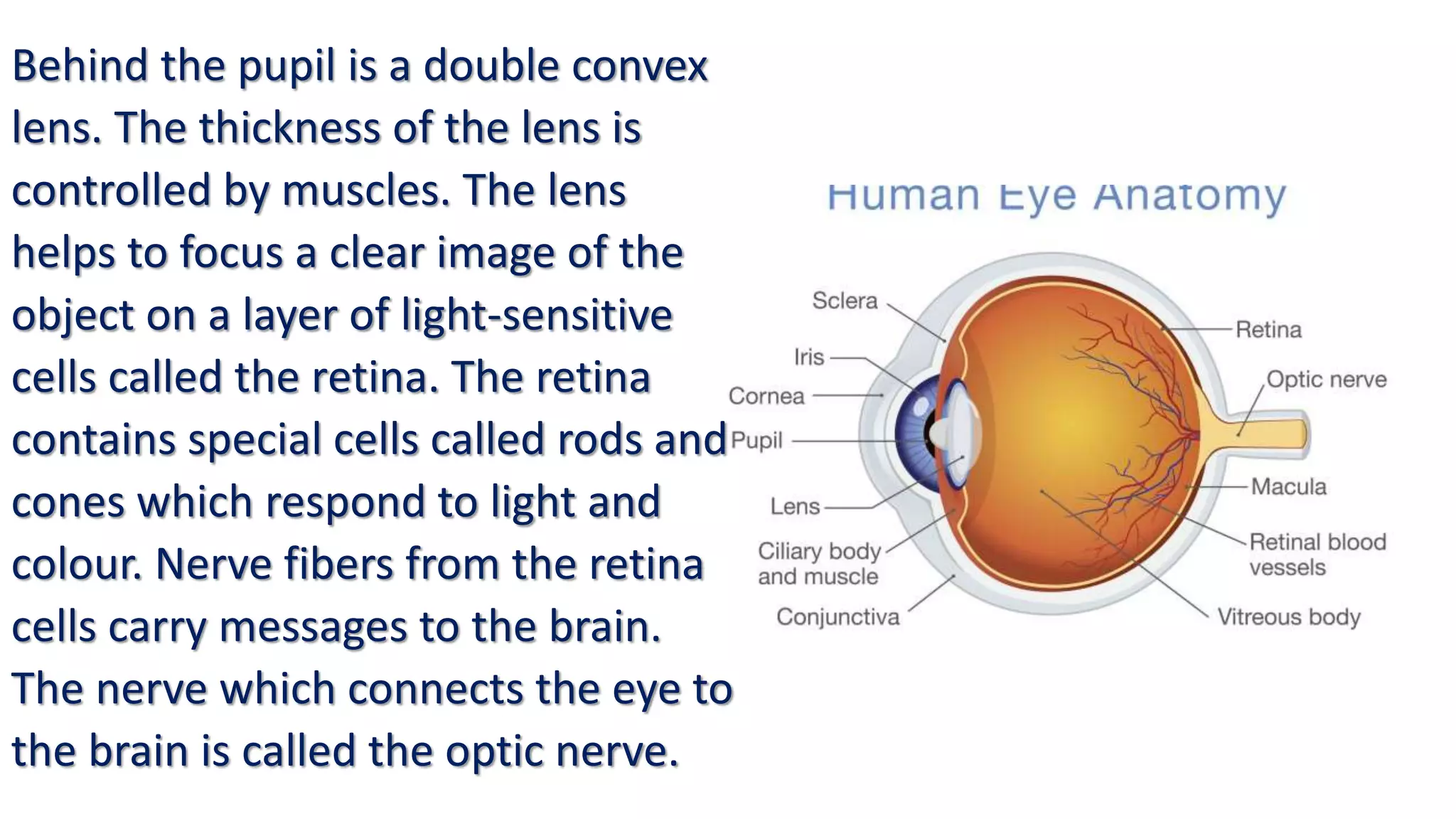All living organisms are sensitive to changes inside and outside their bodies. They respond through movement or movement of their parts. Simple organisms like amoeba and algae are sensitive to light intensity through eye spots, while plants like trifolium and mimosa respond to light and touch. Plants sense light, water, and gravity and respond through tropisms like phototropism and geotropism, which are controlled by the plant hormone auxin.





